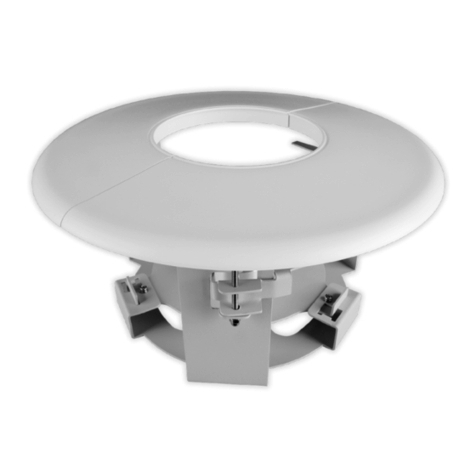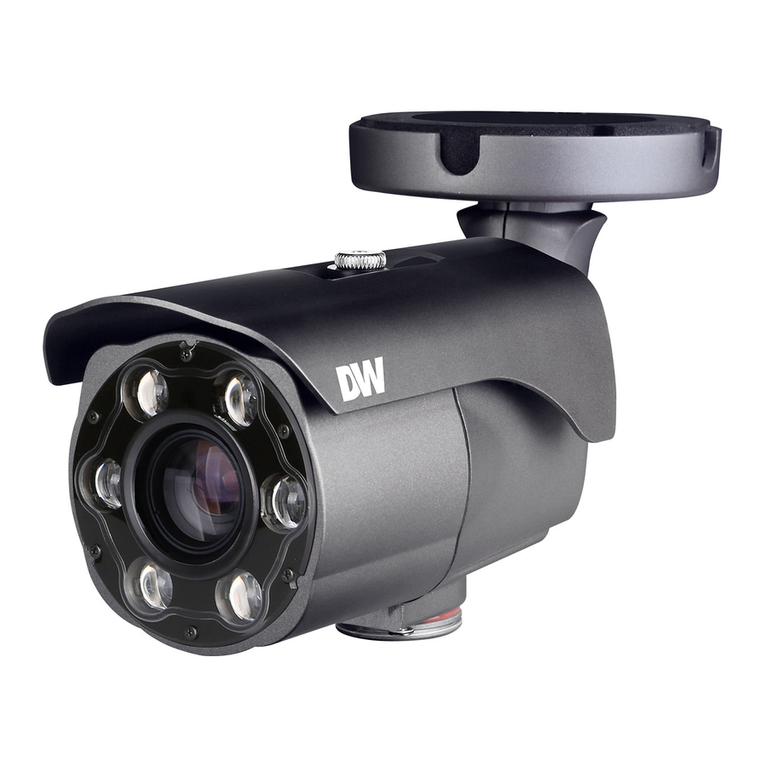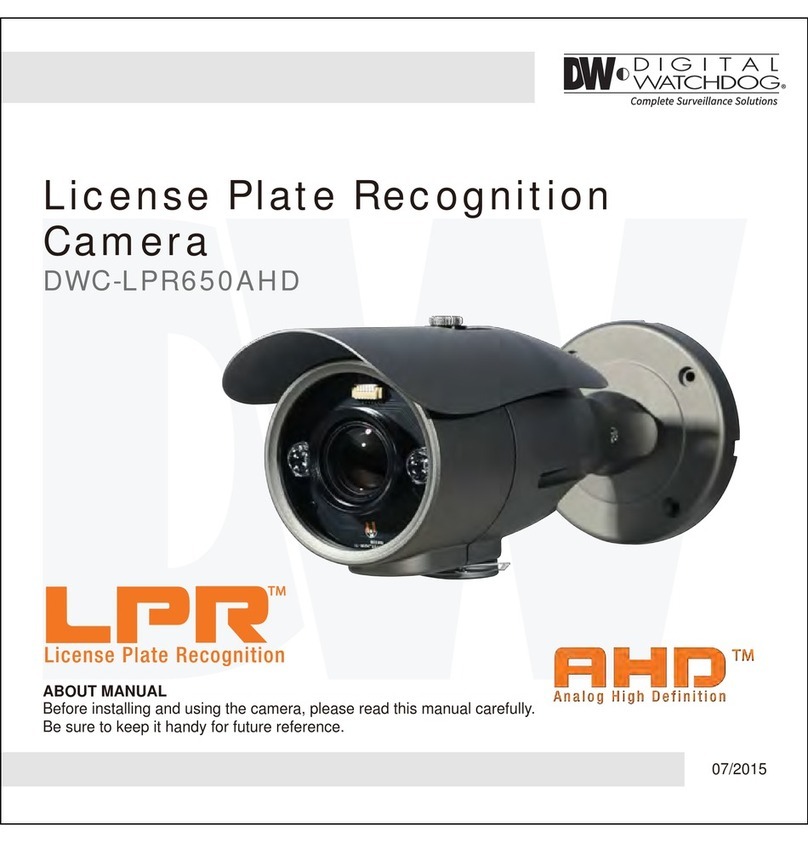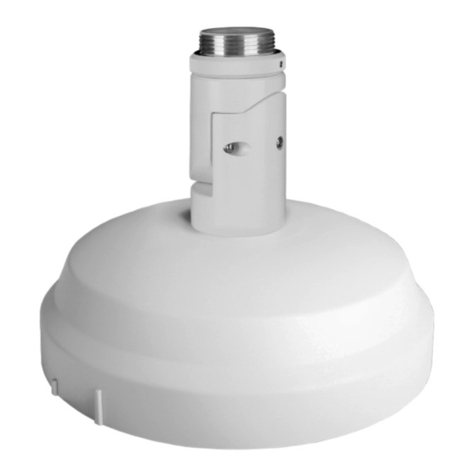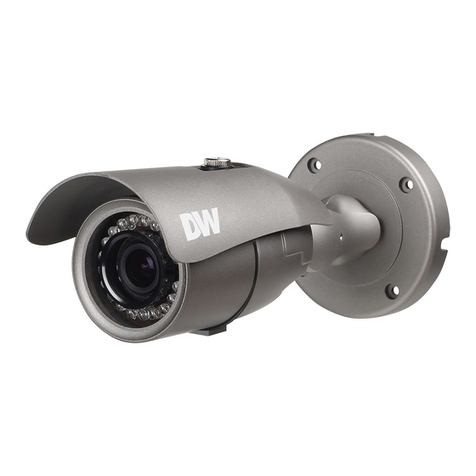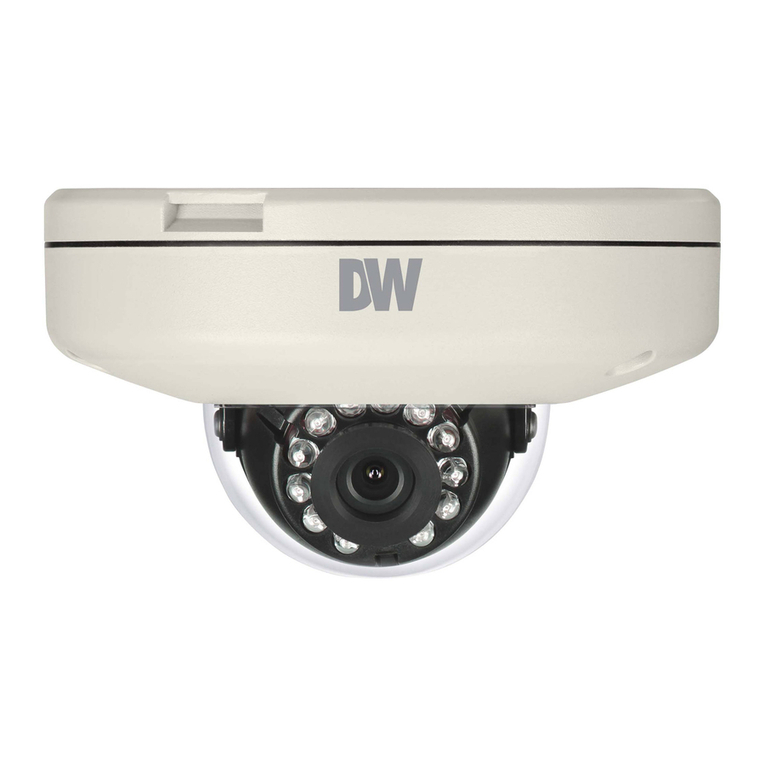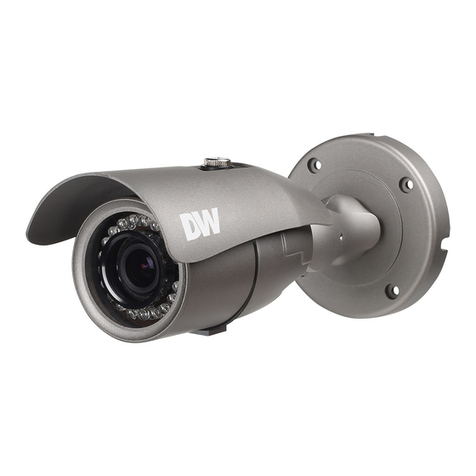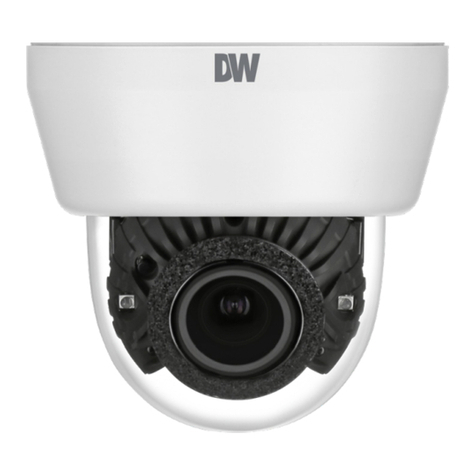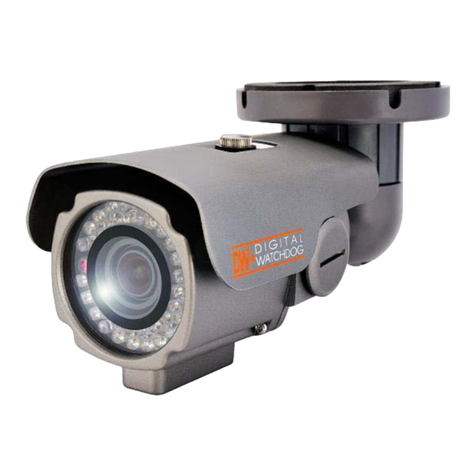
Rev Date: 04/20
Copyright © Digital Watchdog. All rights reserved.
Specifications and pricing are subject to change without notice.
Quick Start Guide
STEP 3 – INSTALLING THE CAMERA (CONT.)
Installation using mount bolt and screws:
1. Using the template sheet, make and drill the cabling holes on the wall/
ceiling.
2. Secure the two long mounting screws to the camera’s base.
3. Pass the wires through the mount bracket and make all necessary
connections.
4. Mount the camera to the mounting surface by using the 2 mounting
nuts. Rotate the locking discs over the screws until the camera is held
tightly from the mounting surface.
5. Secure the camera’s cover dome onto the camera base to complete
the installation.
STEP 5 – WEB VIEWER
NOTE: Please see the full product manual for web viewer setup,
functions and camera settings options.
NOTE: Some menu options may not be available based on the
camera model. See the full manual for more information.
*
Once the camera’s network settings have been setup properly, you can
access the camera’s web viewer using the DW® IP Finder™.
To open the camera’s web viewer:
1. Find the camera using the DW® IP Finder™.
2. Double-click on the camera’s view in the results table.
3. Press the ‘View Camera Website’. The camera’s web viewer will open
up in your default web browser.
4. Enter the camera’s username and password
(default are admin / admin).
5. If you are accessing the camera for the first time, install the VLC
player for web files in order to view video from the camera.
*
The GUI display may dier by camera models.
STEP 6 – SETUP DW SPECTRUM® CAAS™
FOR RECORDING
To complete the DW Spectrum®CaaS™ server’s setup and start recording,
see the DW Spectrum®CaaS™ QSG for additional information.
STEP 4 – DW® IP FINDER™
Network Setup
1. To install the DW® IP Finder™, go to:
http://www.digital-watchdog.com
2. Enter “DW® IP Finder™” on the search box at the top of the page
and press Enter.
3. Click on the DW® IP Finder™ from the search result and go to
Software tab. Click on download icon to download the
DW® IP Finder™ installation file.
4. Run the installation file and follow the wizard to install the
DW® IP Finder™. Open the DW® IP Finder™ and click ‘Scan
Devices’. It will scan the selected network for all supported
devices and list the results in the table. During the scan, the DW®
logo will turn gray.
Default ID / PW: admin / admin
‘Port forwarding’ has to be set in your
network’s router for external access
to the camera.
*NOTE: For security purposes, it is highly
recommended to change your
password after initial setup.
Default TCP/IP information: DHCP
Select DHCP if the internet service is dynamic IP. This will allow the
camera to receive its IP address from the DHCP server.
Select Static to manually enter the camera’s IP address, (Sub)
Netmask, Gateway and DNS information.
The camera’s IP must be set to “Static” if connecting to
DW Spectrum® IPVMS.
Contact your network administrator for more information.
Thumbnail view
Firmware version
Camera’s uptime
Open Device
configuration
settings
Filter device type to scan
Scan devices
Select network to scan
Show/hide thumbnail view
Refresh thumbnail view
Bulk IP assignment
Firmware upgrade
Device’s
information
5. Select a camera from the list by double-clicking on the
camera’s image or clicking on the ‘Click’ button under the
IP Conf. column. The pop-up window will show the camera’s
current network settings, allowing admin users to adjust the
settings as needed.
6. To access the camera’s web page, click on ‘View
Camera Website’.
7. To save the changes made to the
camera’s setting, input username and
password of the camera and click Apply.
Click ‘Scan Devices’ from the
main screen again to display the
updated information.
Use the DW® IP Finder™ software to scan the network and detect all MEGApix® cameras, set the camera’s network settings or access the camera’s web client.
